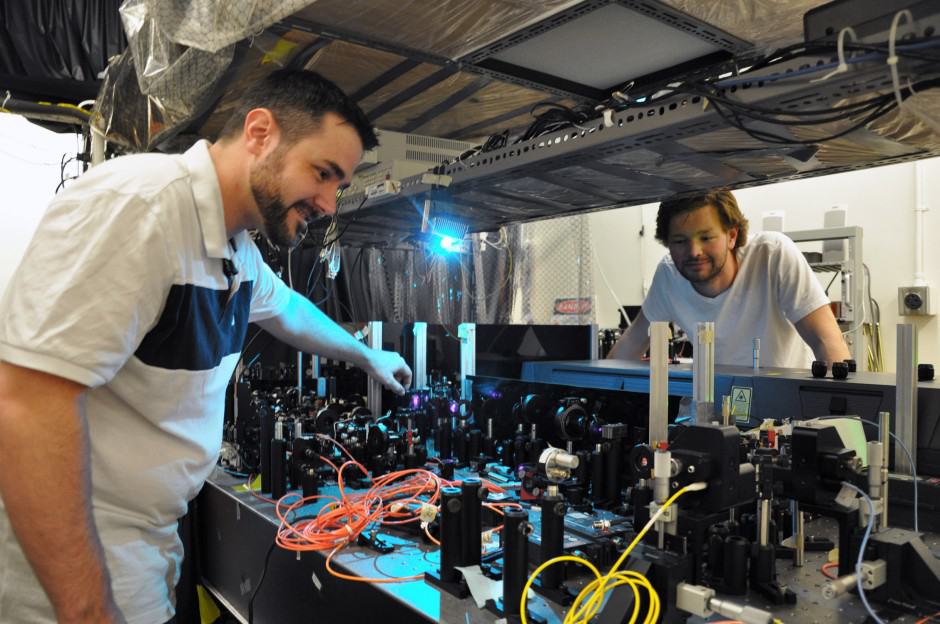Ask a theoretical physicist about the universal speed limit, and you will likely hear an answer on the order of one trillion kilometres per hour. According to special relativity, the speed of light cannot be exceeded by any matter or information in the universe. The wavelength of light also poses limits — specifically in terms of making precise measurements. Fortunately, physicists at the University of Toronto have recently discovered a means of utilizing light’s quantum properties to overcome these measurement limitations.
Making measurements by using light as a medium is possible due to the phenomenon of photon interference — the optical equivalent to the ripples caused by two stones dropped into a still pond. Interference is key to imaging, as well as photolithography, the technology used to create patterns on computer chips. Devices called interferometers are used to measure the effects of interference, and all of these technologies have historically been limited in resolution by the wavelength of light.
The resolution can be improved by sending more photons — discrete bundles of light energy — through the interferometer and by using entangled photons — photons that communicate instantaneously with each other. The technique of using entangled photons requires all the photons to reach the same detector. Professor Aephraim Steinberg and his research team at the U of T Department of Physics have successfully sidestepped the resolution limit by building on a proposal by physicist Mankei Tsang.
Tsang, then at MIT, proposed in 2009 that in order to create a system to improve measurement accuracy, detectors could be placed at every position a photon could reach so one could calculate the average position of all detected photons, without having to discard any of the photons. University of Ottawa physicist Robert Boyd tested this idea with two photons and two detectors, but Steinberg’s group has improved efficiency by using “an optical fibre ribbon,” a novel device created by the lab to collect photons and send them to 11 detectors.
“Sending independent photons or 2, 3, or 4 entangled photons into our interferometer, we saw clear evidence for the resolution advantage of entangled light,” Steinberg writes on his Department of Physics website. “While two photons are better than one, eleven detectors are far better than two: this work opens up a path for using entangled states of light to carry out ultra-precise measurements.” The researchers anticipate that, as technology progresses, their techniques can be used to measure more photons, thereby increasing the resolution of the measurements.
Measurement technologies are used widely, and it is difficult to predict just where a certain advance may lead. The Defense Advanced Research Projects Agency (DARPA) in the United States funds a quantum entanglement research program in order to benefit from advances in sensing and measurement technology. No matter the outcome, this technical advance brings more information to the scientific discussion about the nature of quantum entanglement and the relevant experimental techniques.
Graduate degree candidates Lee Rozema and James Bateman assisted in leading Steinberg’s research team, with major contributions from Dylan Mahler. The experiment was carried out at the University of Toronto. Additional collaborators included Alex Hayat, a former U of T postdoctoral fellow now at the Technion – Israel Institute of Technology; and Ryo Okamoto of Hokkaido and Osaka Universities. The results of this study, “Scalable spatial superresolution using entangled photons,” are published in the June 6 issue of Physical Review Letters.
Correction: June 26, 2014: A previous version of this article contained factual errors.


